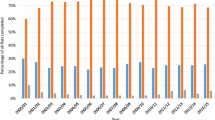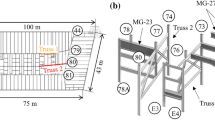Abstract
The collapse of tall buildings in a densely populated urban setting is a scenario too terrible to contemplate. Buildings are routinely designed to resist this limit state under the extreme loading conditions of high winds and earthquakes etc. However the potential of multiple floor fires to cause such a disaster remains unrecognised in the profession as no current building codes require the consideration of this type of extreme loading. Previous work by the author and his students has demonstrated that the collapse of tall buildings in multiple floor fires is a distinct possibility as the mechanisms that can cause this are easily reproduced using a non-linear finite element analysis programme. This work has been extended by the author and his students to develop a simple analytical method for systematically assessing the collapse of exterior columns of tall buildings for any given fire scenarios. This paper considerably simplifies the method developed previously to the extent that the limit state of collapse under multiple floor fires can be checked even without the need to consider any particular “design” fire and with calculations that can be performed in minutes. This is based on the assumption that in major fires that affect multiple floors, it is quite likely that a number of floors will reach a state of deflection and reduced stiffness that the main load carrying mechanism will be that of catenary action leading to destabilising pull-in forces to be exerted on exterior columns. The paper will outline all the steps that must be carried out to check if the remaining structure (columns, floors, connections etc.) will remain stable under the action of the pull-in forces. It will also provide theoretical justification and discussion for all the steps and assumptions made in the assessment. Furthermore the method will be applied to a number of examples, including that of the WTC towers to check if those buildings were safe under major fires involving multiple floors.
Similar content being viewed by others
References
Edinburgh University (2001). “Partners in Technology Report: Behaviour of steel framed structures under fire conditions.” Main Report, University of Edinburgh.
FEMA (2002). World Trade Center Building Performance Study: Data collection, preliminary observations and recommendations. Technical Report FEMA 403.
Flint, G.R. (2005). Fire Induced Collapse of Tall Buildings. PhD thesis, University of Edinburgh.
Flint, G.R. et al. (2007). Structural response of tall buildings to multiple floor fires. Journal of Structural Engineering, ASCE J. of Structural Engineering, Vol. 133, No. 12, pp. 1719–1732.
Lamont, S. et al. (2003). Assessment of the fire resistance test with respect to beams in real structures. AISC Engineering Journal, Vol. 40, No. 2, pp. 63–75.
Lange, D. et al. (2007). Tall building collapse mechanisms initiated by fire — Part II: Design method. Submitted to the Structural Engineer.
NIST (2005). Global Structural Analysis of the Response of the World Trade Center Towers to Impact Damage and Fire. Technical report NIST NCSTAR 1-6D.
Rasbash, D.J. et al. (2004). Evaluation of Fire Safety. John Wiley & Sons Ltd, ISBN 0-471-49382-1.
Roben, C. et al. (2007). Tall building collapse mechanisms initiated by fire-Part I: Analysis. Submitted to the Structural Engineer.
Usmani, A. et al. (2001). “Fundamental principles of structural behaviour under thermal effects.” Fire Safety Journal, Vol. 36, pp. 721–744.
Usmani, A. et al. (2003). “How did the WTC Towers Collapse? A New Theory.” Fire Safety Journal, Vol. 38, pp. 501–533
Usmani A. (2005). “Stability of the World Trade Center Twin Towers structural frame in multiple floor fires.” Journal of Engineering Mechanics, ASCE, Vol. 131, pp. 654–657.
Usmani, A. et al. (2006). “Tall building collapse mechanisms initiated by fire.” Proceedings of the 4th Workshop on Structures in Fire (SiF’06), Aveiro, Portugal.
Usmani, A. (2008). “A very simple method for assessing tall building safety in major fires.” Proceedings of the 5th Conference on Structures in Fire (SiF’06), Singapore.
Author information
Authors and Affiliations
Corresponding author
Rights and permissions
About this article
Cite this article
Usmani, A., Roben, C. & Al-Remal, A. A very simple method for assessing tall building safety in major fires. Int J Steel Struct 9, 17–28 (2009). https://doi.org/10.1007/BF03249476
Received:
Accepted:
Issue Date:
DOI: https://doi.org/10.1007/BF03249476




